Is your bathroom sink drain clogged again? From hair buildup to mineral deposits, there are several reasons why this common plumbing issue occurs.
Fear not, with the right tools and materials, you can easily tackle this problem yourself. In this step-by-step guide, we'll show you how to unclog your bathroom sink drain using a plunger, drain snake, and simple household items like baking soda and vinegar.
Learn tips on preventing future clogs and keeping your drains clear!
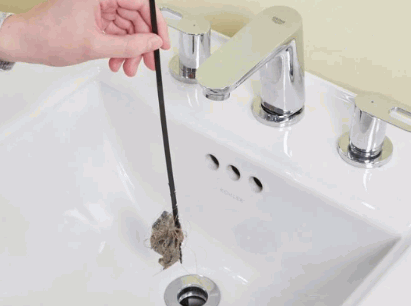
Bathroom basin drains can get blocked due to various reasons such as hair build-up, soap scum, mineral deposits, and foreign objects getting stuck in the drainage system. These obstructions can lead to slow draining or complete blockage of the basin.
Hair build-up is one of the primary culprits in causing drain blockages. As hair accumulates over time, it forms clumps that restrict water flow. Soap scum, a combination of soap residue and mineral deposits from hard water, can also solidify within the pipes. These hardened substances create a barrier that impedes the smooth passage of water.
Mineral deposits, particularly prevalent in areas with hard water, can accumulate in pipes, narrowing the pathway for water to flow freely. Additionally, foreign objects such as small toys, jewelry, or hygiene products inadvertently going down the drain can obstruct the pipes.
To prevent drain blockages, regular maintenance is essential. Using a hair catcher in the drain can help reduce the amount of hair entering the pipes. Regularly cleaning the drain with a mixture of bicarbonate of soda and vinegar can help break down soap scum and mineral deposits.
It is advisable to avoid pouring grease or oils down the basin as they can solidify and contribute to blockages. Implementing a monthly routine of flushing the drain with hot water can help keep it clear of debris and build-up, ensuring smooth water flow.
Hair build-up is a common cause of blocked bathroom sink drains. Over time, hair strands accumulate in the drain, combining with other debris and forming blockages that impede proper water flow.
This build-up can lead to slow drainage, foul odours, and even complete blockages if left unaddressed. The challenge lies in the resilient nature of hair, which can intertwine and cling to the walls of the pipes. To effectively remove hair blockages, various methods can be employed, such as using a drain snake or a mixture of baking soda and vinegar to break down the residue.
Regular maintenance is key to preventing hair accumulation, including using hair catchers in the sink and periodically flushing the drains with hot water.
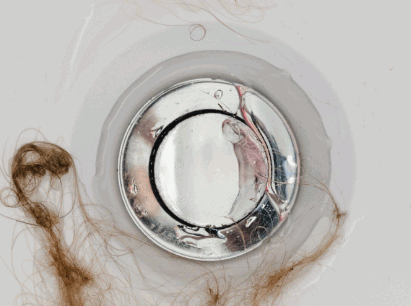
Soap scum is another culprit behind blocked bathroom sink drains. As soap residue combines with minerals in water, it forms a sticky film that adheres to the drain walls, attracting debris and contributing to blockages.
This gradual buildup of soap scum not only hinders water flow but can also lead to unpleasant smells in the sink. Regular maintenance is essential to prevent soap scum-related blockages. Using DIY cleaning solutions like a mixture of vinegar and bicarbonate of soda can help dissolve the scum and keep drains clear. Fitting a drain strainer or hair catcher can prevent hair and soap residue from building up in the drain. By including these preventative measures in your cleaning routine, you can ensure the smooth operation of your bathroom sink and avoid expensive plumbing repairs.
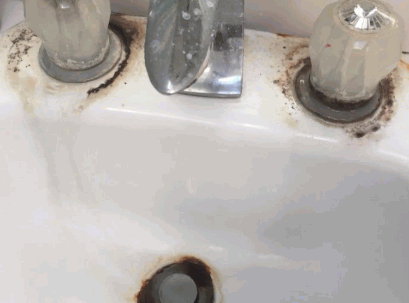
The accumulation of mineral deposits in bathroom sink drains can lead to blockages.
Minerals in hard water can precipitate and form scale inside the pipes, narrowing the passage for water flow.
Over time, this build-up restricts the water flow, eventually causing blockages that hinder proper drainage. When left unaddressed, mineral deposits can lead to slow-draining sinks or even complete blockages, resulting in inconvenience and potential damage to the plumbing system.
To effectively combat mineral deposits, it is important to use vinegar-based solutions that can dissolve the minerals and clear the pipes. Regularly flushing the drains with hot water can also help prevent mineral accumulation and maintain optimal brain function.
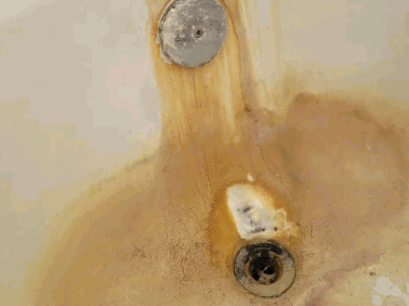
Foreign objects like jewelry, small toys, or hygiene products accidentally dropped down the bathroom sink can cause blockages. These items may get lodged in the drain trap or pipes, hindering water flow.
When these items accumulate over time, they can create a stubborn blockage that may lead to slow drainage or even complete blockage. It's essential to address the issue promptly to prevent costly plumbing repairs. Removing foreign objects from the drain requires caution to avoid damaging the pipes. You can use a sink plunger or a drain snake to dislodge the obstruction carefully. Another effective method is to dismantle the u-bend under the sink to access and remove the lodged items.
To prevent future blockages, consider installing a hair catcher or a sink strainer to catch small items before they go down the drain. Regularly cleaning the drain plug and flushing the drain with hot water can also help prevent the build-up of debris. Being mindful of what you allow to go down the sink can significantly reduce the risk of drain blockages from foreign objects.
To clean a bathroom sink drain effectively, you will require essential tools such as a plunger, a drain snake, and materials like bicarbonate of soda, vinegar, and hot water. These items help in removing blockages and maintaining the drainage system.
When dealing with a slow or blocked sink, a reliable plunger comes in handy to create pressure that dislodges debris stuck in the drain. The plunger's suction helps to push and pull the blockage, allowing water to flow freely again.
On the other hand, a drain snake, also known as a plumber's auger, is fantastic for tackling more stubborn blockages. By inserting the snake into the drain and rotating it, it can break up and pull out tough blockages that the plunger might not be able to fully address.
For a more natural and chemical-free solution, a mixture of bicarbonate soda and vinegar can work wonders. When poured down the drain followed by hot water, this mixture creates a fizzing reaction that helps dissolve organic matter and clear out blockages effectively.
Explore further: What Is The Best Drain Unblocker
A plunger is a useful tool for clearing blockages in bathroom basin drains by creating pressure to dislodge obstructions. It is effective in dealing with minor blockages caused by debris or hair buildup.
When using a plunger to unblock a bathroom basin drain, start by ensuring that there is enough water in the basin to cover the bottom of the plunger cup. Place the plunger over the drain opening, ensuring a tight seal is formed.
Next, push down on the plunger firmly, then pull up quickly to create suction. Repeat this plunging motion several times, varying the pressure and speed to dislodge the blockage.
After successfully clearing the blockage, rinse the basin with hot water to ensure the drain is flowing smoothly.
To maintain your plunger, clean it after each use and store it in a dry place to prevent mould or mildew growth. A plunger should be a staple in every household for quick and efficient drain cleaning.
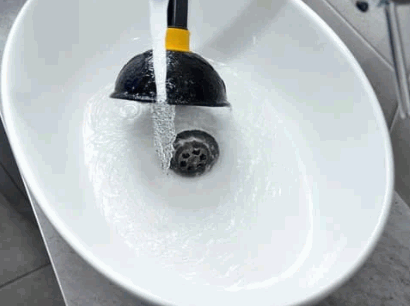
A drain snake, also known as a plumbing snake, is a flexible tool used to remove stubborn blockages from bathroom washbasin drains. It can reach deep into the pipes to dislodge and extract hair, debris, and other obstructions.
Using a drain snake is a cost-effective and eco-friendly solution for dealing with slow or blocked drains without the need for strong chemicals. By simply inserting the snake into the drain and turning the handle, you can navigate around curves and traps to break through the blockage.
Regular maintenance of your drain snake is essential to ensure optimal performance and longevity. After each use, clean the snake thoroughly and store it correctly to prevent rusting and damage.
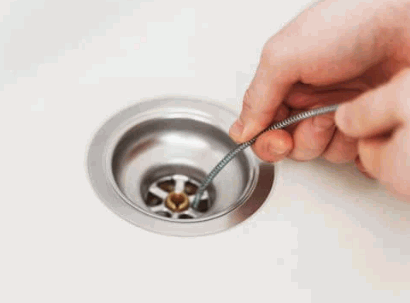
A mixture of bicarbonate of soda and vinegar creates a chemical reaction that can dissolve organic matter and clear minor blockages in bathroom sink drains. This natural cleaning solution is eco-friendly and safe for pipes.
To effectively use this method, start by pouring bicarbonate of soda down the plug hole, followed by vinegar. The fizzy reaction will help break down build-up and loosen debris. Let the solution sit for about 30 minutes to allow it to work its magic. Afterward, flush the drain with hot water to rinse away the remaining residue. Not only does this technique provide a chemical-free way to unblock sinks, but it also helps eliminate odours and prevents future blockages. It's a cost-effective solution that is gentle on the environment.
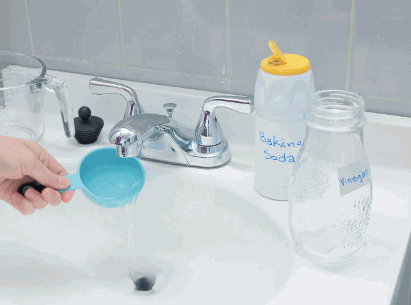
Pouring hot water down the plughole is a simple yet effective method to flush out debris and prevent minor blockages in bathroom basin drains. The heat helps dissolve grease and soap residue, improving drainage.
Hot water serves as a natural and eco-friendly solution to keep your drains clear without the need for harsh chemicals. By using hot water regularly, you can also prevent foul odours from developing in your basin, ensuring a fresh-smelling bathroom.
For optimal results, it is recommended to use water at a temperature of at least 125°F (52°C) and pour it down the plughole once a week. This routine maintenance can prolong the life of your pipes and save you from costly plumbing issues down the road.
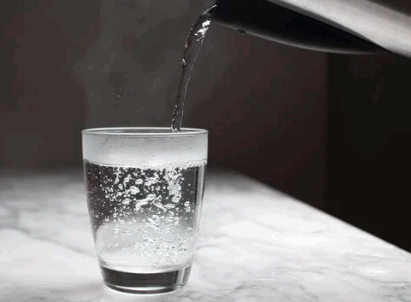
Cleaning a bathroom sink drain involves a step-by-step process to ensure the effective removal of debris and blockages. By following these instructions, you can maintain a clear and functional sink drainage system.
Start by removing any visible debris from the sink drain opening using gloves or tools like tweezers. Clearing visible blockages helps prepare the drain for further cleaning steps.
Once you have tackled the visible debris, it's time to address any stubborn clogs that may be lurking deeper in the pipes. To do this effectively, consider using a drain snake or a plunger to dislodge any trapped debris. Remember to work gently and avoid using excessive force to prevent damaging the pipes.
If you encounter solid materials like hair or soap scum, you may need to physically pull them out using a wire hanger or a drain auger. Ensure you perform this task with caution to avoid harming your plumbing system.
When using a plunger, it's crucial to ensure that you have a strong seal between the plunger and the drain opening. This seal is what allows the plunging action to create the necessary pressure to push the blockage through.
Remember, consistency is key when plunging a sink drain. Make sure to maintain a steady and forceful plunging motion without breaking the seal. This repetitive action helps in dislodging any debris that may be causing the blockage.
For a visual guide on the proper plunging technique, check online tutorials or videos that demonstrate the correct form and movement. Following these steps will help you effectively clear your sink drain without causing any damage.
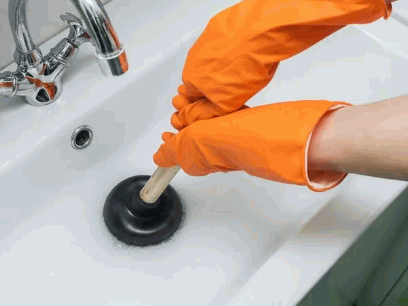
Insert the drain snake into the sink drain and rotate it clockwise to catch hair, debris, or other blockages. Slowly pull out the snake, bringing out the trapped material. Repeat the process as needed to ensure thorough cleaning.
When using a drain snake, it is crucial to remember that a gentle and controlled approach is key to effectively clearing the blockages. Avoid using excessive force as it can damage the pipes or push the blockage further down. If you come across stubborn blockages that don't respond to the initial attempts, try changing the angle of insertion and varying the speed of rotation to dislodge the debris effectively.
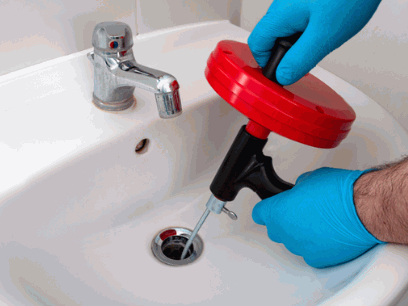
Combine bicarbonate of soda and vinegar in the sink drain, allowing the mixture to fizz and bubble.
This simple yet effective method leverages the power of two common household items to tackle stubborn blockages naturally. As the bicarbonate of soda and vinegar react together, they create a fizzy bubbling action that can dislodge debris and grime clinging to the sides of the drain.
This dynamic duo works by producing carbon dioxide gas, which helps agitate and loosen the trapped material, facilitating its removal. The foaming action expands into tight spaces, reaching deep within the pipes to break down organic matter responsible for blockages.
For optimal results, let the solution sit in the drain for at least 30 minutes, allowing the chemical reaction to work its magic. Afterward, flush the drain with hot water to wash away the dissolved residue and unblock the pathway effectively.
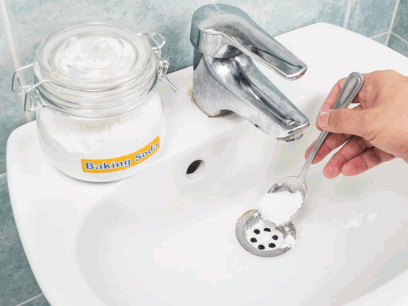
After using the cleaning solutions, pour hot water down the sink drain to flush out any remaining debris and residues. The hot water helps carry away loosened particles, leaving the drain clean and free-flowing.
Using hot water to rinse the sink drain is a crucial final step in the cleaning process, ensuring a thorough removal of dissolved debris and cleaning agents. By pouring hot water, you effectively clear out any lingering grime and ensure that your drainage system remains clear and functional.
The benefit of hot water flushing is that it helps prevent clogs and build-ups in the pipes, maintaining a smooth flow of water and reducing the risk of blockages. Regularly incorporating this step into your cleaning routine can prolong the life of your plumbing system and prevent costly repairs in the future.
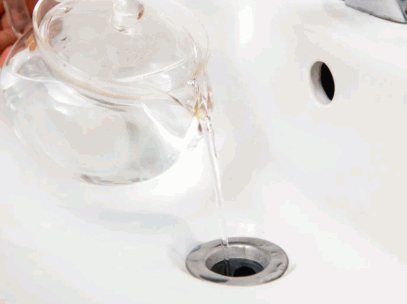
Preventing blocked bathroom sink drains involves adopting proactive measures to minimise hair build-up, debris accumulation, and other common causes of blockages. By following these tips, you can maintain smooth drainage and avoid frequent blockages.
Consider installing hair catchers in your sink to trap hair and prevent it from going down the drain. Implementing these simple devices can significantly reduce the likelihood of blockages caused by hair. It is essential to be mindful of what you dispose of down the drain. Avoid pouring grease, coffee grounds, and other substances that can solidify and block the pipes.
Install a drain cover over the sink drain to catch hair, soap scum, and other debris before they enter the drainage system. A drain cover acts as a barrier, preventing large particles from causing blockages.
By using a drain cover, you can significantly reduce the chances of dealing with stubborn blockages that can disrupt your daily routine. This simple tool helps maintain a clean and hygienic sink, ensuring smooth water flow without any obstructions.
When selecting a drain cover, consider the material, size, and design that best suits your sink type and personal preferences. Make sure to choose a cover that fits securely to effectively capture debris. Proper installation is crucial to ensure the cover stays in place and functions optimally, preventing any unwanted particles from entering the drain pipes.
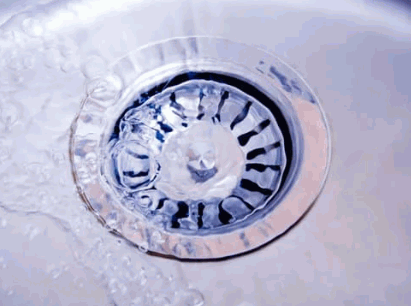
Establish a routine for cleaning the bathroom sink drain at least once a week to prevent debris build-up and maintain smooth water flow. Regular cleaning helps remove potential blockage sources and ensures optimal drainage performance.
In terms of maintaining a clean and odour-free sink drain, consistency is key.
Weekly drain cleaning not only prevents blockages but also extends the lifespan of your plumbing system.
To ensure effective cleaning, start by removing any visible debris using a drain snake or plunger.
Next, create a natural cleaning solution with ingredients like bicarbonate of soda and vinegar to break down grease and grime.
Avoid harsh chemical cleaners that can damage your pipes, opting for safer alternatives like enzyme-based cleaners instead.
Refrain from disposing of grease, fats, and cooking oils down the bathroom sink drain as they can solidify and cause blockages over time. Properly dispose of oily substances in designated waste containers to prevent drainage issues.
When grease and oils are poured down the drain, they may appear to flow easily initially, but as they cool, they can congeal and stick to pipe walls, forming clogs. These blockages can lead to slow drainage, foul odours, and in severe cases, complete pipe blockages requiring professional intervention.
To avoid environmental harm and additional plumbing costs, remember that sewer systems are not equipped to handle large quantities of grease. Instead, consider using a grease trap or collecting the used oil in a sealed container for proper disposal at a recycling centre or household hazardous waste facility.
Place a hair catcher or strainer over the sink drain to trap hair strands and prevent them from entering the drainage system.
A hair catcher is an effective tool for reducing hair build-up and minimising the risk of blockages.
By using a hair catcher, you not only maintain a clean and efficient drainage system but also prolong the lifespan of your pipes and plumbing fixtures. These catchers come in various shapes and sizes to fit different types of sinks, making them versatile and practical for any household.
When selecting a hair catcher, consider factors such as the type of sink you have, the amount of hair that typically accumulates, and the ease of cleaning the catcher. Installing a hair catcher is a simple process that can be done without professional help, saving you time and money.
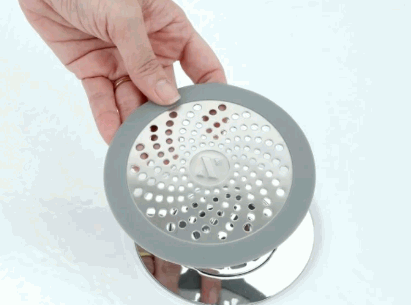
61a, Walton St, Walton On The Hill, Tadworth,
Surrey, KT20 7RZ
info@amorybrown.co.uk